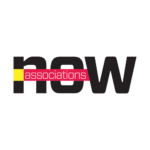
Talking Tech: Information Architects
Christopher Coogan, deputy director and chief of staff at the Association for Institutional Research, and CIO Kashif Imran explain two common methods of organizing information.
Christopher Coogan, deputy director and chief of staff at the Association for Institutional Research, and CIO Kashif Imran explain two common methods of organizing information.
First, what’s the difference between a taxonomy and a folksonomy?
The taxonomy most of us are very familiar with is the Dewey Decimal System used for storing and retrieving books, periodicals, etc., at many libraries. Most taxonomies are purposefully inflexible and hierarchical in nature because they are intended to force content authors, those who store content, and other system users to utilize prescribed methods, terms, and hierarchies of controlling content storage. A well-maintained taxonomy structure allows others to follow that predefined structure to locate information or to classify new additions.
Folksonomies are very different and much more flexible. They are also known as “social tagging” because typically the content users create the keywords (and tag those keywords to the content). The terms used in folksonomies are flexible, inconsistent, not hierarchical, and community driven.
Is there ever a time when an organization might have both?
There are many times that an association would use both, but for different reasons. Associations can use folksonomies for social discovery or when they need to classify content quickly and by a large number of content users. But taxonomies are what make search, sorting, and reporting of content more efficient and provide an optimal experience for all stakeholders. Over time, the top-used tags from folksonomies bubble to the top and can be brought into the organization’s taxonomy structure.
When getting started with an information organization project, what’s the first step an association should take?
Associations should start by running a few discovery sessions to find out the real pain points in the organization and understand the underlying business issues related to the information organization. They need to look at the process of content creation, management, storage, preservation, and access to find the bottlenecks, time sinks, and soul-crushing issues. The outcome of these discovery sessions can help develop a roadmap with the current and desired states of their information system.
(Tashi-Delek/ThinkStock)






Comments